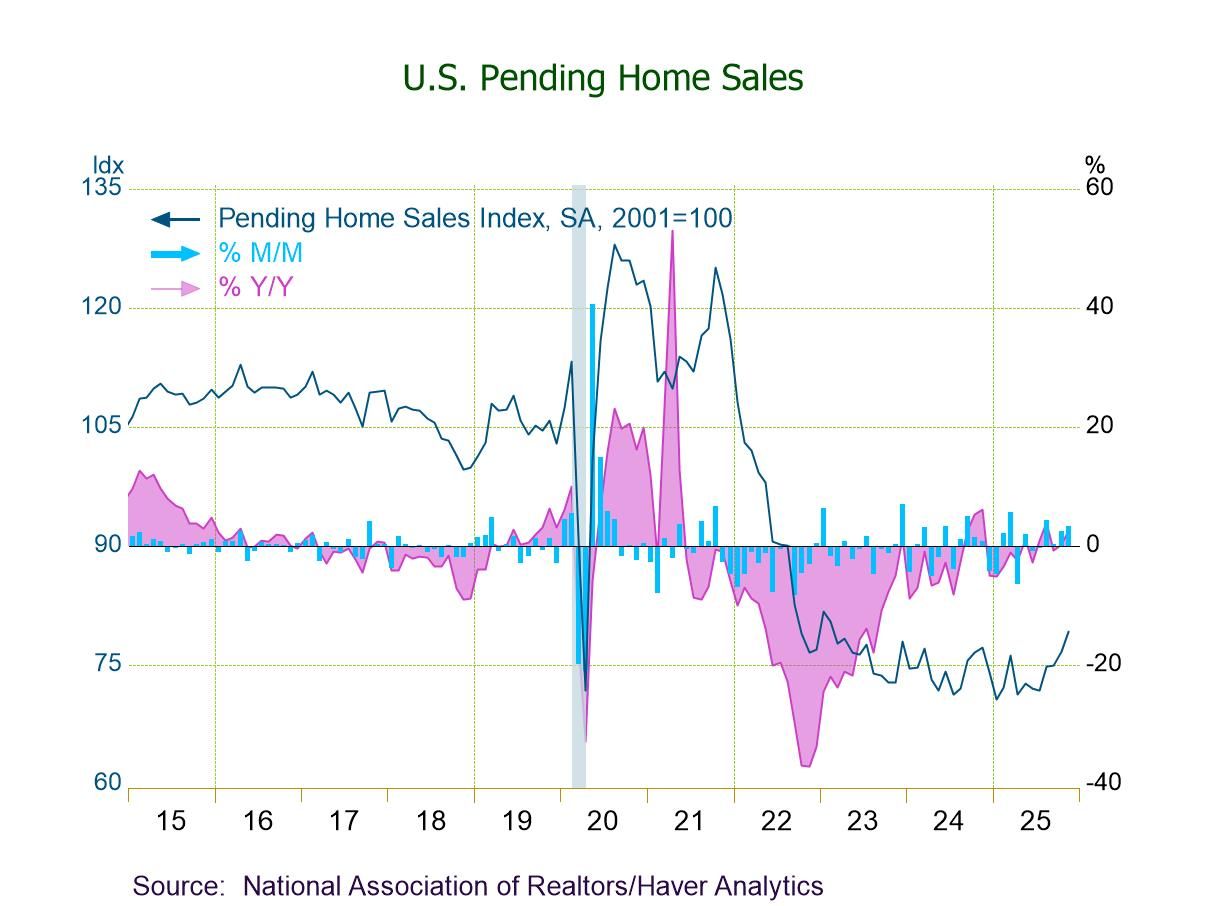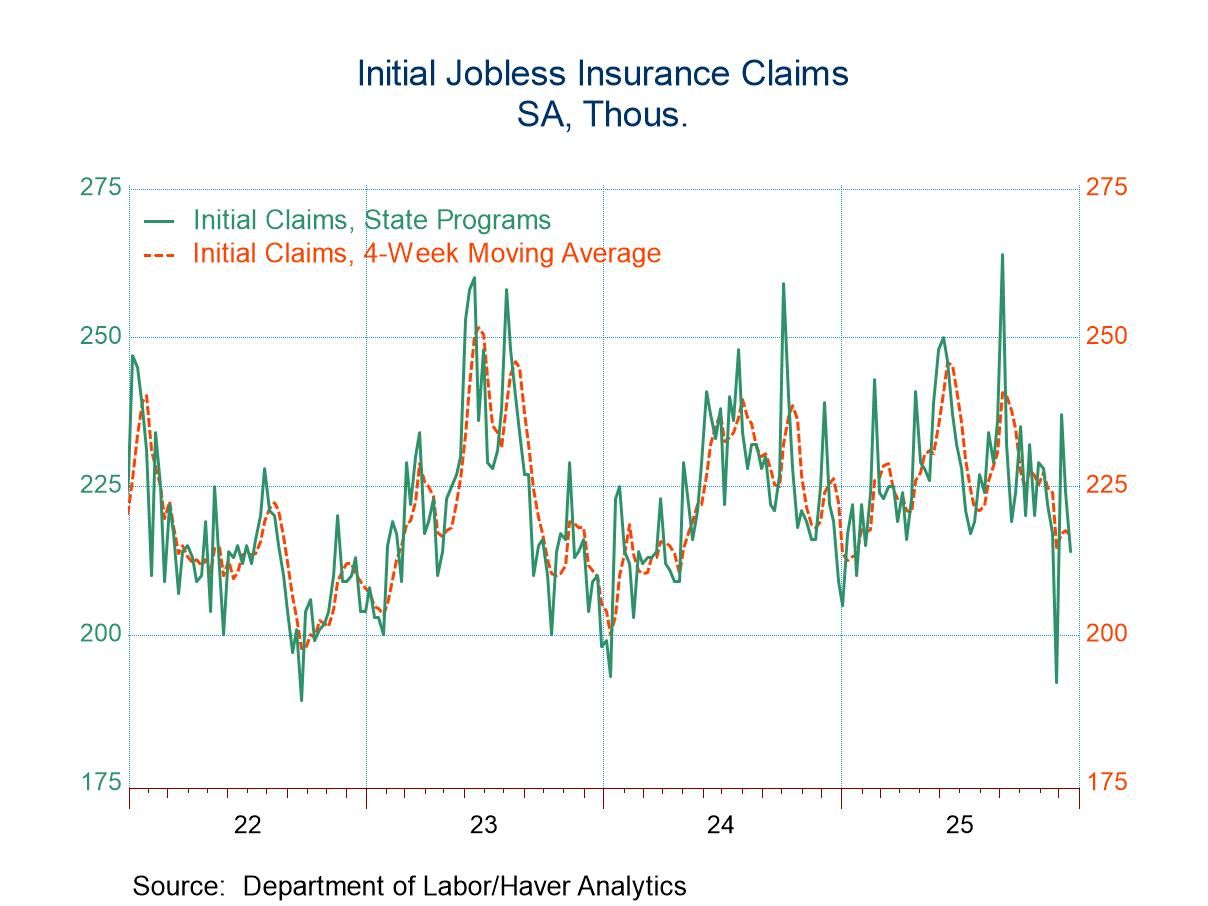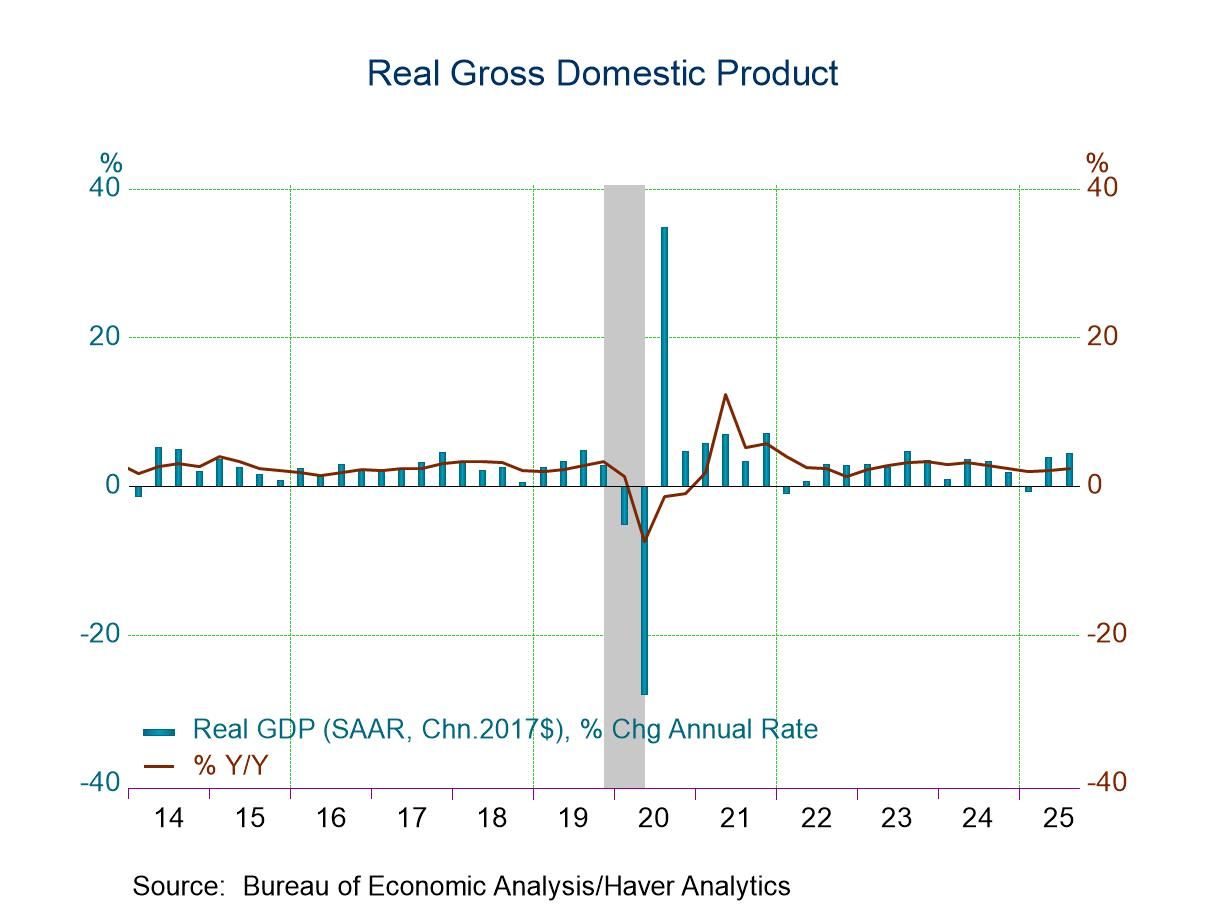U.S. Import Prices Hold Steady in June While Export Prices Decline
Summary
- Import prices 0.0% (1.6% y/y) in June vs. -0.2% (+1.4% y/y) in May, reflecting a 1.0% m/m drop in imported fuel prices.
- Excluding fuels, import prices rise 0.2%, up for the seventh time in eight months.
- Export prices fall 0.5% (+0.7% y/y), led by a 0.6% m/m decline in nonag export prices.
- Year-on-year import & export price growth rates rise modestly.


Import prices unexpectedly held steady m/m in June after a 0.2% drop in May (-0.4% initially) and a 1.0% rise in April (+0.9% previously), according to the Bureau of Labor Statistics. The year-on-year rate accelerated to 1.6% in June, the highest since December 2022, from 1.4% in May; it was -6.1% y/y in June 2023. Export prices fell a more-than-expected 0.5% m/m in June after a 0.7% drop in May (-0.6% initially) and a 0.7% rise in April (+0.6% previously). The y/y rate quickened to 0.7% in June, the highest since January 2023, from 0.5% in May; it was -11.8% y/y in June 2023. Notably, both import and export prices registered a string of m/m increases from January and April; import prices fell y/y from February 2023 to February 2024 and export prices fell y/y from February 2023 to April 2024. The Action Economics Forecast survey had expected a 0.1% m/m decline in both import prices and export prices for June.
The no change m/m in import prices in June reflected a 1.0% drop (+8.2% y/y) in imported fuel prices after an upwardly revised 0.4% increase in May (-2.0% initially). The June reading was the first m/m fall since December 2023. The drop in imported fuel costs reflected price declines of 4.5% (-37.4% y/y) in natural gas, 1.2% (+9.6% y/y) in petroleum & petroleum products, and 0.7% (+11.7% y/y) in crude oil. Nonfuel import prices, however, rose 0.2% (1.0% y/y) in June, the seventh m/m rise in eight months, following an unrevised 0.3% decline in May. Import prices for foods, feeds & beverages (0.7%; 6.7% y/y), nonfuel industrial supplies & materials (0.6%; 0.4% y/y), and automotive vehicles & parts (0.1%; 2.5% y/y) increased m/m in June. Meanwhile, import prices for consumer goods excluding autos dipped 0.1% (+0.6% y/y) in June; those for capital goods were unchanged (-0.2% y/y) after a 0.2% May decline.
The June m/m fall in export prices reflected an increase in agricultural export prices and a decline in nonagricultural export prices. Agricultural export prices rose 0.6% (-4.8% y/y) in June following a 0.3% increase in May (+0.5% initially) and two successive m/m decreases. Nongricultural export prices fell 0.6% (+1.4% y/y) in June after an unrevised 0.8% decline in May and four straight m/m increases. Export prices for industrial supplies & materials (-1.3%; +1.3% y/y) and consumer goods excluding autos (-0.5%; -2.0% y/y) fell m/m in June, while those for foods, feeds & beverages (0.8%; -4.5% y/y) and automotive vehicles & parts (0.1%; 4.0% y/y) rose m/m. Meanwhile, export prices for capital goods held steady (1.8% y/y) in June following two consecutive m/m rises.
The import and export price series can be found in Haver’s USECON database. Detailed figures are available in the USINT database. The expectations figure from the Action Economics Forecast Survey is in the AS1REPNA database.


Winnie Tapasanun
AuthorMore in Author Profile »Winnie Tapasanun has been working for Haver Analytics since 2013. She has 20+ years of working in the financial services industry. As Vice President and Economic Analyst at Globicus International, Inc., a New York-based company specializing in macroeconomics and financial markets, Winnie oversaw the company’s business operations, managed financial and economic data, and wrote daily reports on macroeconomics and financial markets. Prior to working at Globicus, she was Investment Promotion Officer at the New York Office of the Thailand Board of Investment (BOI) where she wrote monthly reports on the U.S. economic outlook, wrote reports on the outlook of key U.S. industries, and assisted investors on doing business and investment in Thailand. Prior to joining the BOI, she was Adjunct Professor teaching International Political Economy/International Relations at the City College of New York. Prior to her teaching experience at the CCNY, Winnie successfully completed internships at the United Nations. Winnie holds an MA Degree from Long Island University, New York. She also did graduate studies at Columbia University in the City of New York and doctoral requirements at the Graduate Center of the City University of New York. Her areas of specialization are international political economy, macroeconomics, financial markets, political economy, international relations, and business development/business strategy. Her regional specialization includes, but not limited to, Southeast Asia and East Asia. Winnie is bilingual in English and Thai with competency in French. She loves to travel (~30 countries) to better understand each country’s unique economy, fascinating culture and people as well as the global economy as a whole.






